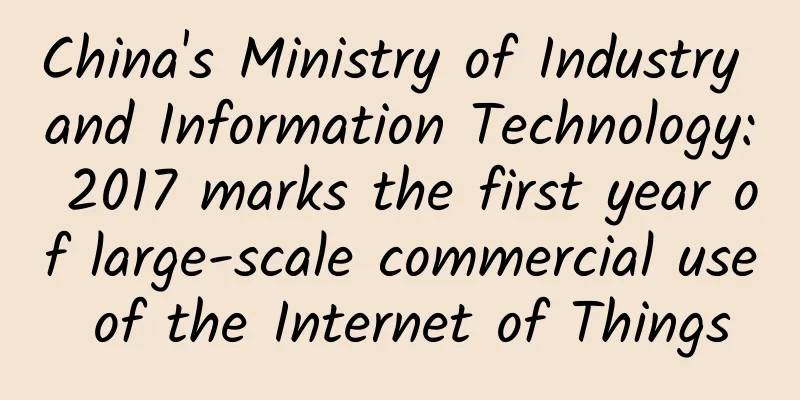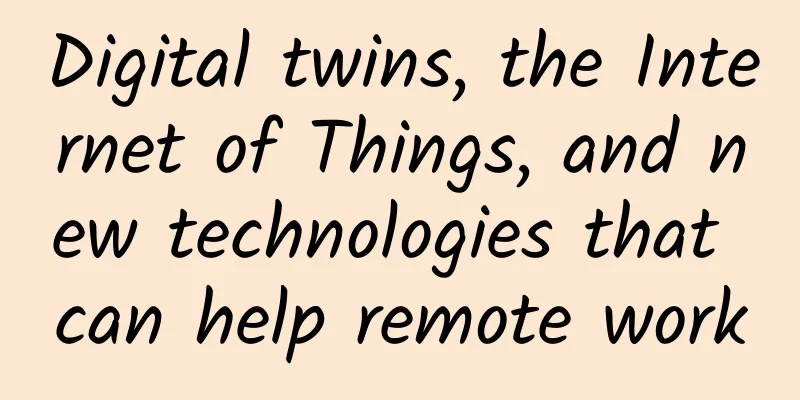The three major operators are accelerating their computing power

|
Computing power is the core of cloud computing. With the growing demand for computing power in the cloud computing market and the commercialization of 5G, solving computing power problems and responding to new scenarios have become the new focus. "The stage of productivity development is accelerating from the power era to the computing power era." According to calculations by the China Academy of Information and Communications Technology: From the perspective of input-output, the scale of my country's computing power industry reached 2 trillion yuan in 2020, directly driving economic output of 1.7 trillion yuan and indirectly driving economic output of 6.3 trillion yuan. That is, for every 1 yuan invested in the computing power industry, it will drive an average of 3-4 yuan of economic output. This year, the National Development and Reform Commission, the Cyberspace Administration of China, the Ministry of Industry and Information Technology, and the National Energy Administration jointly issued the "Implementation Plan for the Computing Power Hub of the National Integrated Big Data Center Collaborative Innovation System" (No. 709 of the National Development and Reform Commission and High-tech [2021], hereinafter referred to as the "Plan"), which clearly proposed the layout of national hub nodes in the national computing power network, launched the implementation of the "East Data West Computing" project, and built a national computing power network system. The three major operators have all placed computing power in an important position, but they have different focuses in its development.
China Mobile: Three Steps to Computing NetworkChina Mobile said that the computing network is an important booster for China Mobile's transformation and development, and is the new "foundation" for China Mobile to build a solid "power building" development strategy. The computing network is a systematic project that carries forward the past and opens up the future. It is both a short-term and medium-term plan and a medium- and long-term innovation direction. At the "2021 China Mobile Global Partner Conference", Yang Jie, Chairman of China Mobile, also clearly stated: Comprehensively promote the maturity of computing network technology, industry, ecology, and business models, and promote the network from connecting computing power to perceiving, carrying, and allocating computing power by deepening the integrated development of computing power in physical space, logical space, and heterogeneous space, to achieve ubiquitous computing power and symbiosis of computing networks; through the integration of data and intelligence, build a computing network brain to achieve intelligent orchestration and unified management of computing network resources and capabilities; through the integration of factors and computing power, provide integrated services that transform from "resource-based" to "task-based". China Mobile plans to divide the development of computing network into three stages, namely: the starting stage (ubiquitous collaboration), the development stage (integration and unification), and the leapfrogging stage (integrated endogenous). The core concept of the ubiquitous collaboration stage is "collaboration", with the characteristics of network-based computing, collaborative orchestration, collaborative operation, and one-stop service; the core concept of the integrated unification stage is "integration", with the characteristics of computing network integration, intelligent orchestration, unified operation, and integrated service; the core concept of the integrated endogenous stage is "integration", with the characteristics of computing network integration, endogenous intelligence, innovative operation, and integrated service. At the same time, China Mobile released the "China Mobile Computing Power Network White Paper". In the white paper, China Mobile stated that it will take computing power as the center and the network as the foundation to build a new type of information infrastructure that integrates multiple elements such as network, cloud, data, intelligence, security, edge, end, and chain (ABCDNETS), and promote computing power to become a social-level service like water and electricity that can be accessed at one point and used immediately, and ultimately achieve the development vision of "network reaching everywhere, computing power being omnipresent, and intelligence being all-encompassing." In addition, China Mobile has also launched a diversified computing power incubation platform "Core Nest" in cooperation with some chip companies. It is understood that the "Core Nest" platform focuses on the essence of "computing" and "digital", aims to incubate new chips, sort out the application needs of key industries such as 5G, and map industry needs to chip-level functions, performance, reliability and other requirements. By formulating a unified evaluation standard system, it conducts evaluation and verification to guide chip technology improvement and product iteration. China Unicom: Computing network is cloud-network integration 2.0, and computing-network integration is the key directionChina Unicom believes that computing power network is the next stage in the development and evolution of cloud networks, and computing power network is cloud-network integration 2.0. This year, China Unicom upgraded its network innovation system to CUBE-Net3.0, and "computing and network integration" is one of the key directions of China Unicom's CUBE-Net3.0, striving to provide an "extreme, flexible, intelligent and simple" computing network. It has been put into practice in four provinces and cities, including Beijing, Hebei, Shandong and Guangdong, and has achieved phased results. Liu Liehong, Chairman of China Unicom, said that China Unicom is striving to build a "Unicom Cloud" that is cloud-network integrated, secure, reliable, customized, and multi-cloud collaborative, forming a multi-level computing facility system that integrates data and network, data and cloud, cloud and edge, and is green and intelligent. It supports comprehensive and diverse digital needs in different dimensions and levels, promotes a new layout of computing power networks with advanced architecture, security and reliability, and excellent services, and creates the "first computing power engine" for the digital economy. According to Tang Xiongyan, deputy director and chief scientist of China Unicom Research Institute, "In the next step, China Unicom will focus on the research and application of IPv6+ technology system to build a computing network brain, enable computing network integrated services, enable computing network integrated services with SID (SID as a Service) SRv6, build a high-quality, low-latency all-optical computing network, and work with partners to build a new digital infrastructure integrating computing network and empower the digital transformation of the whole society." In addition, China Unicom also released a computing network action plan, which will strengthen the construction of integrated computing and network infrastructure, focus on the layout of national hub nodes, establish a well-planned three-level computing resource pool, and realize multi-level computing coordination at the national, provincial, and municipal levels; based on a safe and reliable all-optical transmission base, continue to build a new computing network with low latency, wide connection, and intelligent cloud-network-edge collaboration, promote the evolution of China Unicom's public Internet to a dual-core architecture of users and computing power, and realize high-quality access from public users to computing power centers; give full play to China Unicom's technological leadership in industrial Internet, and promote effective connection and integrated scheduling between national hub nodes and with provincial, municipal, and edge data centers. According to the plan: China Unicom will complete the overall functional construction of the computing network by implementing core research and development in stages, including the computing network resource plane, computing network resource management plane, computing network control plane, and service orchestration plane. China Telecom: Integrate edge computing, cloud computing and other multi-level computing nodes with the networkThe overall idea of China Telecom's computing power network is to further combine multi-level computing power nodes such as edge computing and cloud computing with the network, realize resource supply under cloud-network integration, and provide users with the best services and operational guarantees. It is worth mentioning that from July 5 to 16 this year, at the rapporteur meeting of the 13th Study Group (SG13) of the International Telecommunication Union Telecommunication Standardization Sector (ITU-T), the computing power network framework and architecture standard (Y.2501) led by the China Academy of Telecommunications Research was adopted. This standard is the first computing power network standard approved by the International Organization for Standardization. According to China Telecom's plan, the computing power network system includes computing power consumers, computing power providers, network operators, computing power network trading platforms, computing power network control planes, etc. Users can associate computing power application stores, AI empowerment platforms and other application providers according to business development needs. In 2020, my country's computing power grew by 30%, and the number of standard racks in data centers exceeded 4 million. Among them, China Telecom owns about 700 data centers with more than 420,000 racks, accounting for one-tenth of the country's computing power. At present, China Telecom is actively promoting the construction of national cloud. According to the construction requirements of the national integrated big data center hub node, it further improves the "2+4+31+X+O" cloud and big data center layout, and builds a new information infrastructure with echelon distribution, cloud-edge collaboration, multiple technology integration, and green intensiveness. Create a fusion resource pool in the two national cloud bases in Menggui; build a large-scale public cloud in four major regions including Beijing-Tianjin-Hebei; build localized exclusive clouds in 31 provincial capitals and key cities; create differentiated edge clouds at the X node; deploy in countries along the "Belt and Road" and extend the computing power system overseas. Lei Bo, director of the IP and Future Network Research Center of China Telecom Research Institute, once said that computing power networks focus on solving problems at two levels: on the one hand, resource association, organically integrating computing power resources, network resources, etc. according to user demands to meet users' diverse needs; on the other hand, resource trading, allowing users to purchase the most suitable computing power resources and network resources on the computing power trading platform based on their business requirements and the costs they can afford. |
<<: UK government to phase out 2G and 3G mobile networks by 2033
Recommend
How fiber optic networks can create more efficient and secure connections
We live in a technologically advanced age where h...
In order to understand the principle of CDN, I have gone bald.
[[420808]] This article is reprinted from the WeC...
Wenku: We need to further explore 5G applications
[[351795]] On November 6, the State Council Infor...
Teach you how to easily obtain local area network devices
[[430847]] Preface With the rapid development of ...
5G means data center platforms must evolve
The foundation for seamless 5G implementation 5G ...
Empowering dream makers in the intelligent era: the breakthrough and establishment of Huawei’s terminal distributed technology
[51CTO.com original article] Many people compare ...
In 2017, the wireless and mobile sectors welcomed multiple favorable factors and the pace of industrial development accelerated.
[[180647]] The bell of 2017 has rung. Facing the ...
DogYun Double 11: 40% off on Dynamic Cloud, 20% off on Classic Cloud, 11 yuan free for 110 yuan top-up, 100 yuan off for Hong Kong/Korea servers per month
DogYun released this year's Double 11 promoti...
MiWi protocol, a network protocol suitable for small IoT
There are many ways to achieve short-distance com...
What are the applications of machine learning in network management?
As networks move toward automation and intelligen...
TNAHosting: 12GB memory OpenVZ monthly payment from $5, 4GB memory KVM monthly payment from $5
I checked and it's been exactly one year sinc...
[Black Friday] ITLDC: 40% off unlimited traffic VPS annual payment, 25% off dedicated server, 14 data centers in the United States/Singapore/Netherlands
ITLDC's Black Friday promotion this year last...
How professionals can develop their latest data center skills
When there are a plethora of industry certificati...
How to smoothly go online after MySQL table sharding?
[[431098]] Purpose of the table During the projec...









